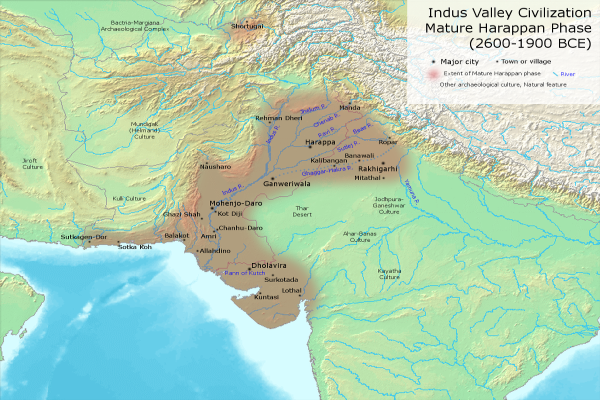From a bygone era
- POSTED ON: 4 May, 2019
- TOTAL VIEWS: 937 Views
- POSTED BY: Madhuvanti S. Krishnan
- ARTICLE POINTS: 150 Points
The past is always fascinating. Travelling back in time, discovering places and thinking about the people who lived there. This week, let’s take a trip to the Indus Valley Civilization.

It was an ancient civilization located in what is today, Pakistan and northwest India, on the fertile flood plain of the Indus River.
Farming settlements began around 4,000 BCE.
First signs of urbanisation appeared around 3,000 BCE.
Many towns and cities were established by 2,600 BCE.
At its peak between 2,500 and 2,000 BCE.
Two cities have been excavated – Mohenjo-Daro on the lower Indus, and Harappa, further upstream.
They lived a highly developed city life. Most houses had wells and bathrooms as well as an elaborate underground drainage system. The social conditions of the citizens were comparable to those in Sumeria and superior to the contemporary Babylonians and Egyptians. The cities displayed a well-planned urbanisation system.
Here are some things that belong the the ancient civilisation. Solve these shuffle puzzles to get a glimpse of them
The Great Bath: Located in Mohenjo-daro, it is one of the well-known structures among the ruins of the ancient Indus Valley Civilization at Mohenjo-daro in Sindh, Pakistan. It is called the “earliest public water tank of the ancient world”.
Pasupathi seal: It depicts a seated figure that is possibly tricephalic (having three heads). The man has a horned headdress and is surrounded by animals. He may represent a horned deity. It is debated to be one of the earliest depictions of the Hindu god Shiva (“Pashupati”, meaning “lord of animals”, is one of Shiva’s epithets) or Rudra.
Priest king statue: It was debated that there was no single ruler, but several cities like Mohenjo-daro had a separate ruler, Harappa and another, and so on. The civilization was thought to be run by priests, which researchers believe, explain the existence of the statue.